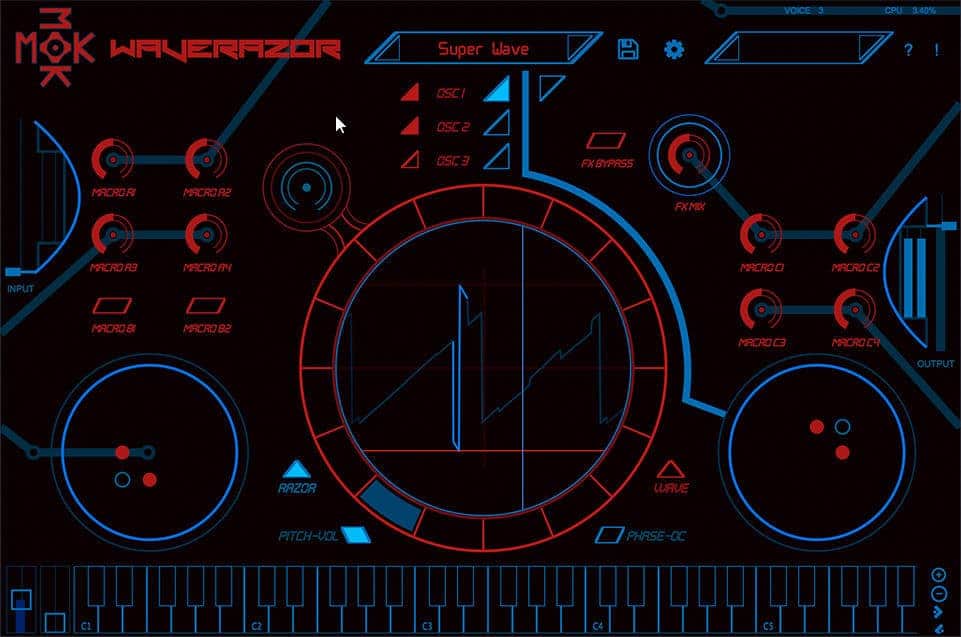

These two silent killers make carving out solid, tearing bass noises of the deepest destructive nature almost ridiculously easy. Spectral Clip's controls enable you to set an upper threshold and a frequency cutoff point, making it ideal for pulling a wayward signal back into a solid, usable shape, or preventing honkiness caused by over-exuberant frequencies.

Safe Bass has the instant effect of bringing all the low end back to a sound that's had much of the bass chopped out of. What initially may seem like clinical tools for minor housekeeping tasks actually turn out to be powerful weapons against weak sounds. You will love Razor and you will use it often. Believe me Native Instruments has put out some vst’s that are a hassle to use and to work with, but this isn’t one of those at all. Spectral Clip limits the levels of individual partials, while Safe Bass ensures that there's always a certain level of bass content in the signal, regardless of the filter shape in use. Razor is actually one of the easier VST’s to operate and manipulate that native instruments has put out. Two elements of Razor that might be easy to overlook are the Spectral Clip and Safe Bass controls. Quality-wise, it's top-drawer, with reduced quality options to save CPU (it is fairly CPU-intensive, while we're on the sub). Massive, ripping DnB/dubstep noises are shockingly easy to dial in, but bumpin' basses and sweet pads/leads are readily had too. Even pad sounds can have a sense of edginess and magnitude that's ideal for complex, atmospheric tones. Razor can bring a sense of drama to pretty much anything. The Dynamics section offers compression/limiting and saturation/clipping, and can lend considerable crunch. The second offers additive-fuelled takes on chorus, reverb, unison and more, with unique features such as the ability of the reverb to follow the pitch of the currently played note, preventing long tails from muddying the sound. The first effects panel, Dissonance, creates timbres that, coupled with modulation, are spot-on for sci-fi FX, dubstep warbles and futuristic soundscapes. There are MIDI control options too, naturally. The envelopes have a novel 'echo' function that causes them to repeat.
#RAZOR VST REVIEW MOD#
Modulation is provided by three envelopes, two syncable LFOs and a 'sidechain' (it basically multiplies two mod sources together). There are killer vowel and formant filters, and a vocoder option - route a sidechain signal into Razor for some of the gnarliest vocoding you'll ever hear. The rest is made up of oddities like 'waterbed', 'unisono noise' and 'gaps' the latter brutally masks out certain partials, like an extreme phaser. Wicked!Įqually twisted are the two filter sections, each with an almost entirely different set of 11 types, with only low-pass and band-pass shared between them. There's even a Hoover waveform for rave-tastic Roland Alpha Juno-esque bass/midrange noises.


 0 kommentar(er)
0 kommentar(er)
